Art Guides
Looking to Make a Life-Changing Art Pilgrimage? Here Are 12 Far-Flung Museums That Are Truly Worth Traveling For
Now, we're just waiting on Antartica's art museum.
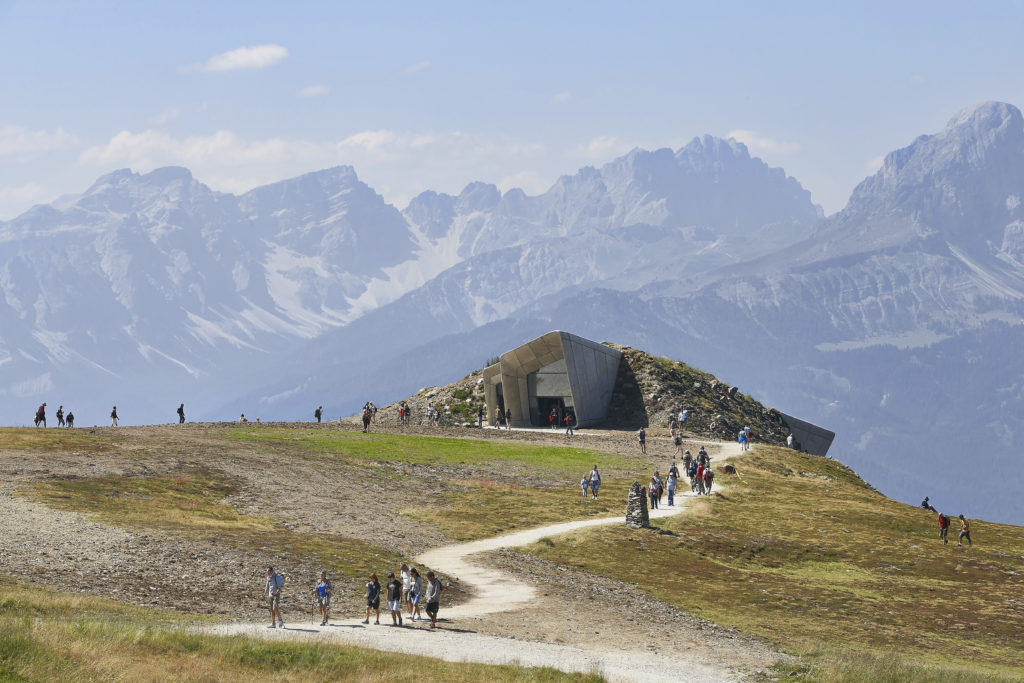
Now, we're just waiting on Antartica's art museum.

Katie White

Are you longing to activate your out-of-office autoreply, but tired of hitting the same cities over and over? For your next big trip, consider adding an extra leg to visit a destination museum. From a tiny Japanese art island to a sprawling cultural compound in the Brazilian countryside, art institutions are springing up around the globe in far-flung locales that you might not otherwise think to visit. But trust us, it’s worth the trek.
If the dreaded drum roll to Labor Day has your wanderlust in overdrive, check out our list of 12 unique museums you should travel the world to visit.
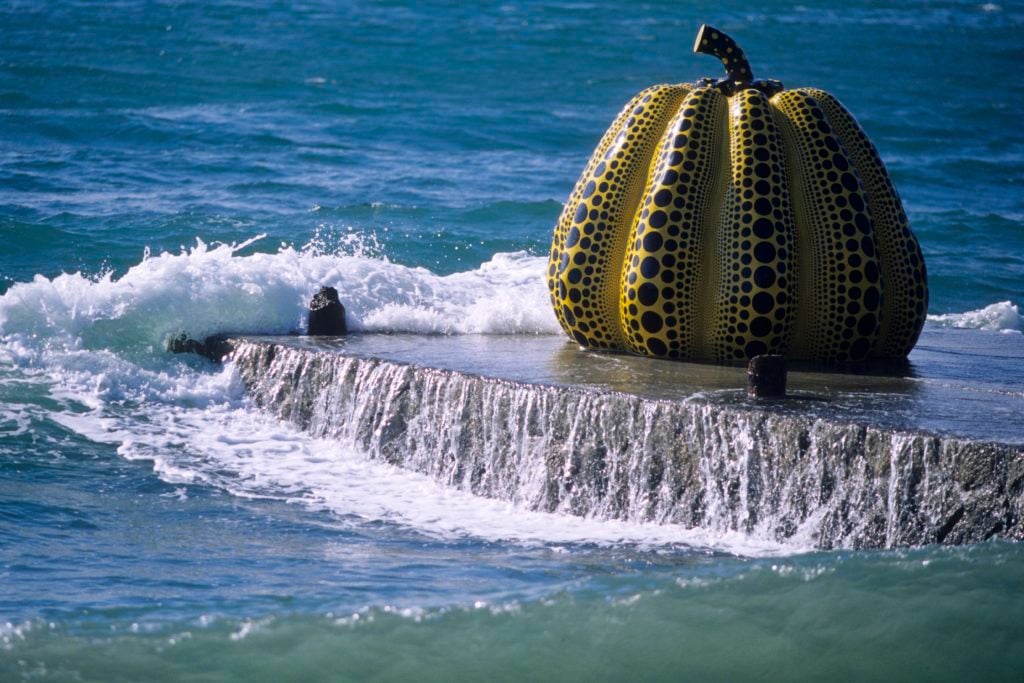
A Yayoi Kusama pumpkin on view at the Benesse foundation in Naoshima, Japan. Courtesy of Veronique Durruty /Gamma-Rapho via Getty Images.
A tiny island in Japan’s Seto Inland Sea, Naoshima is an art junkie’s dream, with more museums per gorgeous square foot than you’re likely to find anywhere else. During the 1990s, Japanese businessman Soichiro Fukutake transformed the once-quiet isle into an immersive art destination centered around a largely subterranean museum designed by Pritzker Prize winner Tadao Ando. The Chichu Art Museum houses a world-class collection of works by Modern masters ranging from Claude Monet to James Turrell and Walter De Maria. Other highlights of the island include the Lee Ufan Museum and the Benesse House Museum. Not tired yet? The Teshima Art Museum and Inujima Seirensho Art Museum are accessible by ferry on a nearby island.
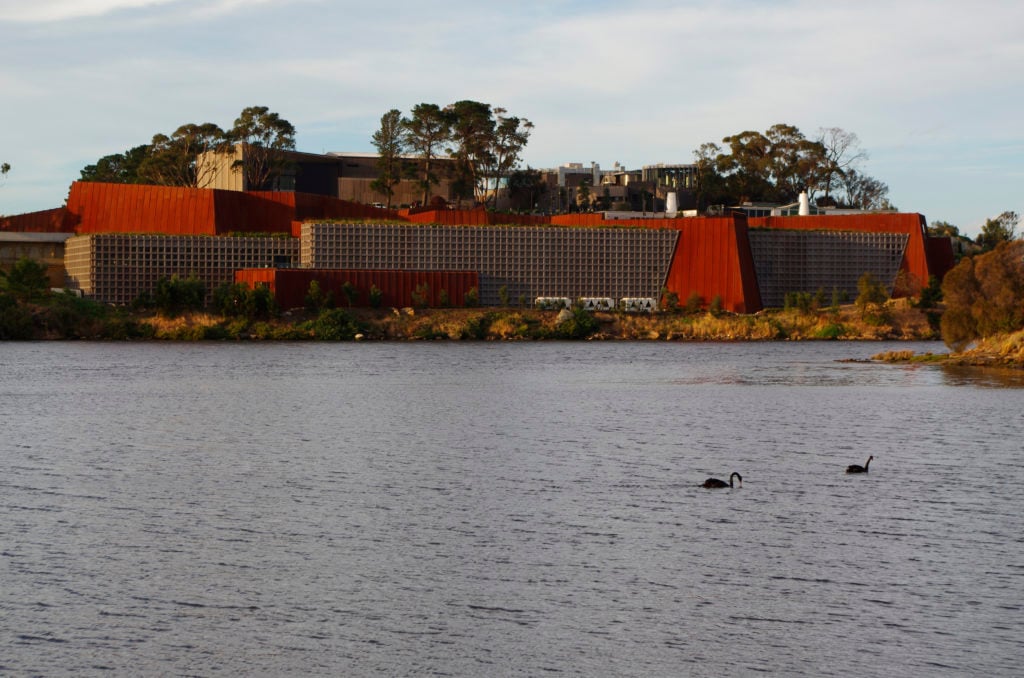
MONA, the Museum of Old and New Art, as idiosyncratic inside as outside, has made Hobart a destination for world travelers. Courtesy of Auscape/Universal Images Group via Getty Images.
If Australia isn’t far enough away for you, head to the island of Tasmania, off the country’s southeastern coast, where you’ll find the Museum of Old and New Art. The oddball institution houses (as its name would suggest) an eclectic mix of ancient, contemporary, and outright bizarre art from the collection of David Dominic Walsh, an eccentric Australian businessman, professional gambler, and art collector. The remote museum is not for the faint of heart (or stomach): one of its most infamous works is Belgian artist Wim Delvoye’s cloaca machine, also known “the shit machine,” which brings food through a series of tubes and chemical processes that mirror the digestive system. Though such outlandishness has fired up Walsh’s critics, the museum has been a much-needed boon for Tasmania’s tourism economy—and offered visitors great cocktail party fodder.
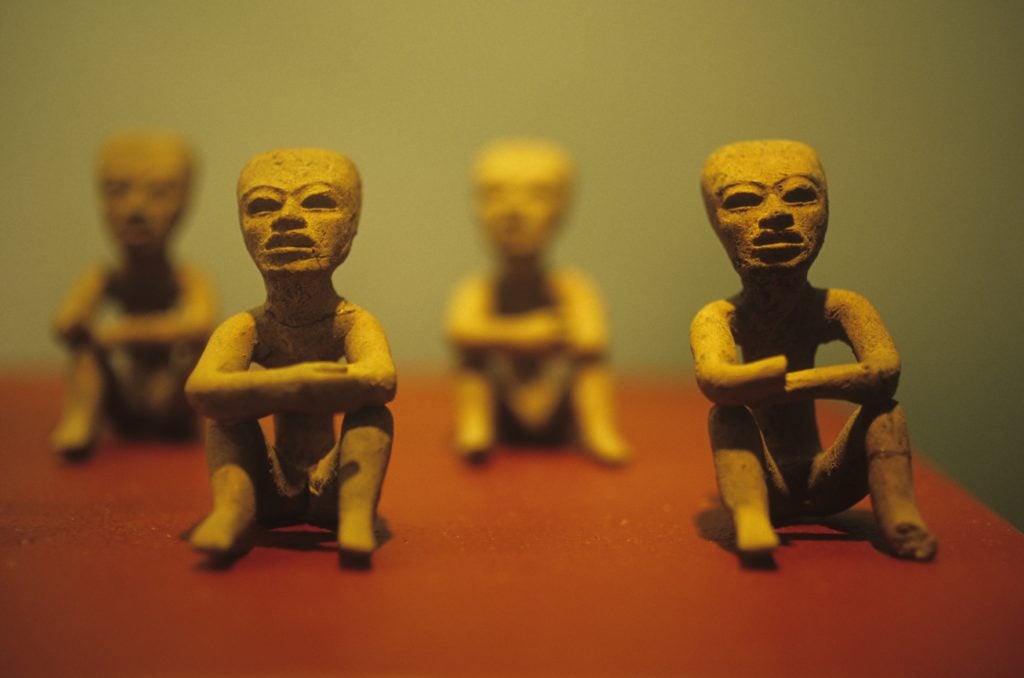
Pre-Columbian sculpture, Museo Amparo in Puebla, Mexico. Courtesy of Veronique Durruty/Gamma-Rapho via Getty Images.
Housed in two colonial-era buildings, the Amparo Museum is set in the center of historic Puebla, a city two hours southeast of Mexico City. The sleepy museum remains shockingly under the radar considering it houses arguably the most significant collection of Mexican Pre-Columbian art and artifacts in the world. Here, visitors will find objects and artworks from Mesoamerica’s indigenous civilizations, especially the Maya, Aztecs, and Zapotecs, with highlights including a Huasteca necklace of 17 skulls carved from bone, the “Olmec Thinker” statue, a Mayan altar from Palenque, and a stele depicting the creation of the universe. While you’re in the area, be sure to check out the nearby International Museum of the Baroque, with its surprisingly minimalist building designed by Toyo Ito.
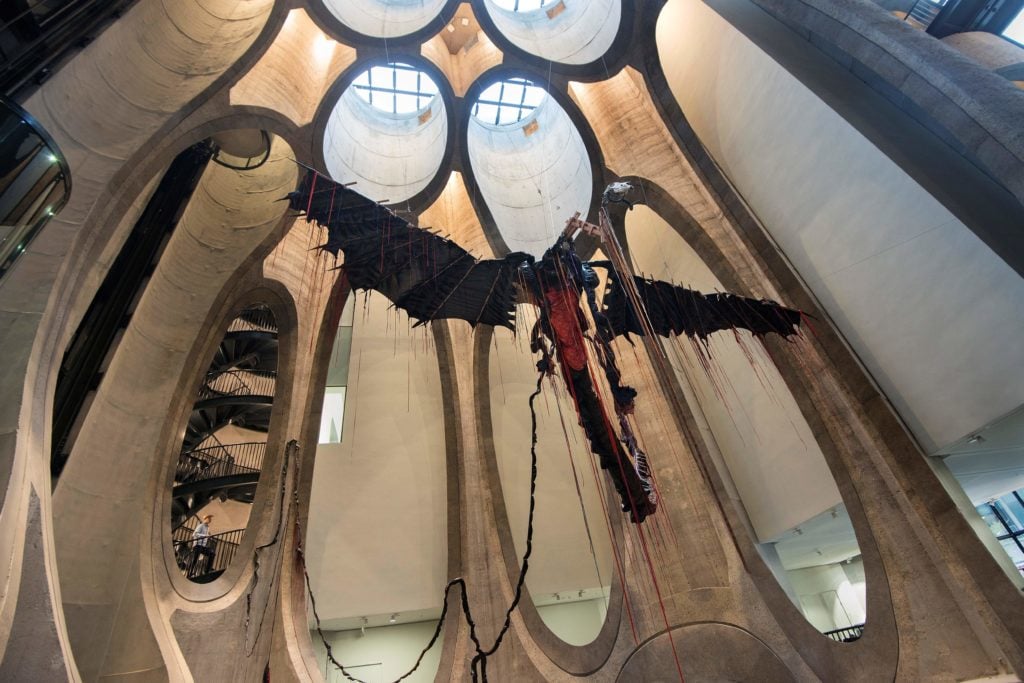
A sculpture by South African artist Nicholas Hlobo dominates the main hall in The Zeitz Museum of Contemporary African Art in Cape Town on September 15, 2017. Photograph Courtesy of Rodger Bosch/AFP/Getty Images).
Zeitz MOCAA, which opened in 2017, is the largest museum in the world dedicated to contemporary African art. (Although it is located in a big city, we opted to stretch our definition and include it on this list because South Africa is a long flight away for most urban-dwellers.) Housed in former corn silo dating from the 1920s, the space—replete with a captivating honeycomb interior—was redesigned by architect Thomas Heatherwick to such great effect that he might be forgiven for the much-maligned Vessel in New York, completed a couple years later. The museum’s founding collection comes from the German businessman Jochen Zeitz, the former head of Puma, and includes work by Chris Ofili, El Anatsui, Marlene Dumas, William Kentridge, and many others.
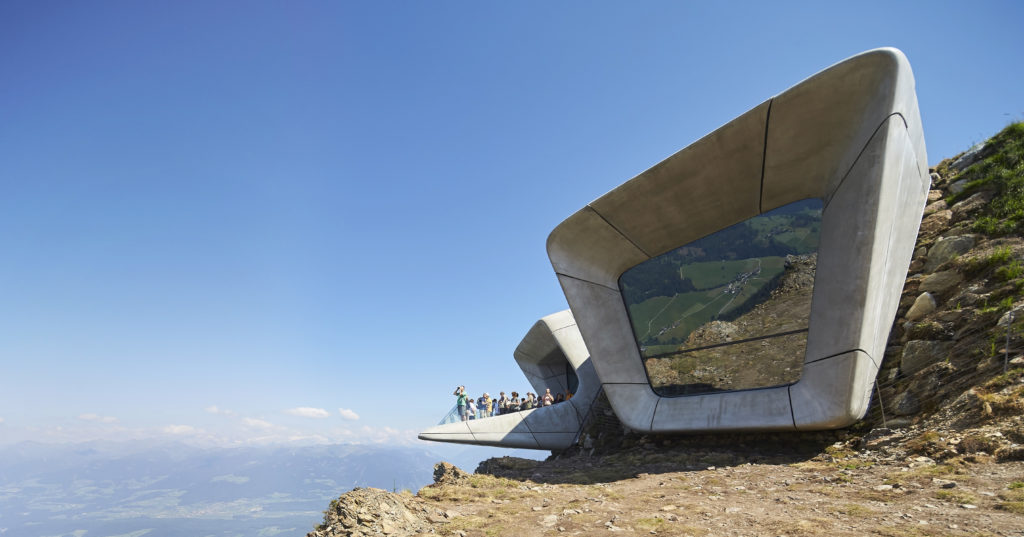
Elevation of picture window and viewing balcony. Messner Mountain Museum Corones, Mount Kronplatz, Italy. Architect: Zaha Hadid Architects, 2015. (Photo by: Hufton+Crow/View Pictures/Universal Images Group via Getty Images)
If you like your culture with a side of hiking, the Messner Mountain Museum in Italy is for you. Developed by the champion mountaineer Reinhold Messner, the first man to climb Mount Everest alone without bottled oxygen, it is a constellation of six institutions devoted to the history and culture of mountain climbing. The newest museum in the bunch, called Corones, is a concrete vessel wedged into the side of a mountaintop by the late architect Zaha Hadid. The collection includes early maps, old hiking boots, and other tools of the trade. But as any climber will tell you, it’s not the destination (i.e., the museum) that will bring you joy as much as the journey to get there.
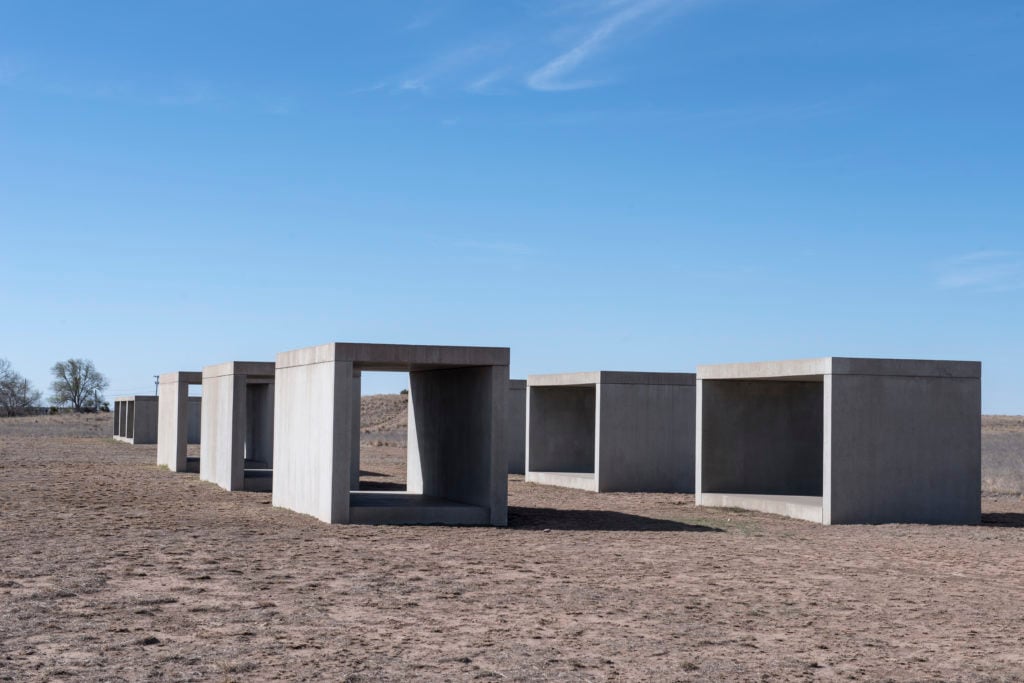
Donald Judd’s Minimalist concrete cubes at the Chinati Foundation, Marfa, Texas. Courtesy of Carol M. Highsmith/Buyenlarge/Getty Images.
No list of remote art destinations would be complete without Chinati. Founded by Donald Judd in 1986, the museum and monument to minimalism is set inside a former military fort in West Texas. Conceived as a place to bring art, architecture, and the environment into coherent balance, the museum originally housed works by Judd, Dan Flavin, and John Chamberlain alone, but has since expanded to include contemporary artists whose work is in keeping with this vision.

A work by Brazilian artist Helio Oiticica on view at the Inhotim Centre for Contemporary Art in Brumadinho, some 60 km from Belo Horizonte, southeastern Brazil, on August 11, 2015. Courtesy of Nelson Almeida /AFP/Getty Images.
Inhotim is a sprawling 5,000-acre garden and contemporary art institute that is home to both one of the largest contemporary art collections in Latin America as well as one of the biggest sculpture gardens in the world. Built in 2004 by (now embattled) former mining tycoon Bernardo Paz, Inhotim was—like many of its far-flung peers—developed as a place where the environment, art, and architecture come together. Artists including Hélio Oiticica, Yayoi Kusama, Anish Kapoor, and Vik Muniz were invited to display work in dedicated pavilions, offering them the space and budget to realize their wildest dreams. (Doug Aitken, for example, dropped a microphone into a 200-meter-deep well to allow visitors to hear the inner workings of the earth. You can’t do that at MoMA.) Another highlight: the majestic botanical garden designed by the late landscape artist Roberto Burle Marx.
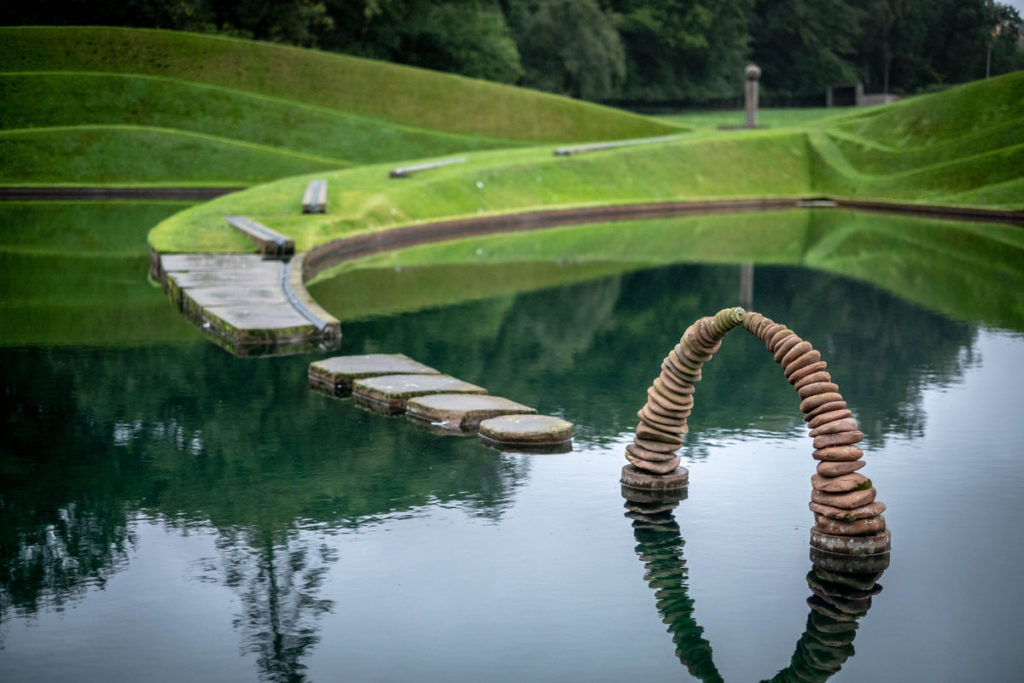
Charles Jencks’ Cells of Life at Jupiter Artland. Courtesy of Steve Hodgeson/Flckr Creative Commons.
Let your Alice in Wonderland fantasies come to life in this Scottish sculpture garden, where the green rolling hills are shaped into tiered ziggurat-like forms (the handiwork of landscape architect Charles Jencks) and whimsical outdoor sculptures pop up at every turn. The grounds are rumored to be situated on a meeting ground of the Knights Templar, which seems entirely possible: a ritualistic, though decidedly pagan, quality suffuses this arts destination. Wandering the grounds, you’ll discover works by Ian Hamilton Finlay, Cornelia Parker, Anish Kapoor, and many others. In the warmer months, visitors can expect outdoor performances by choreographers and other artists.
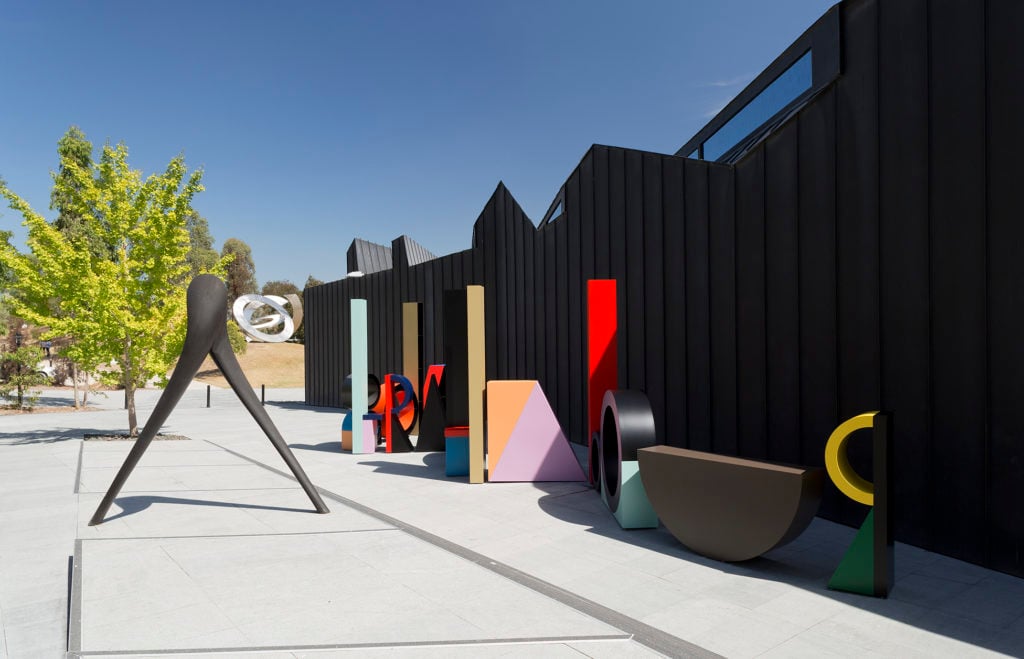
Courtesy of the Heide Museum.
Located about 20 miles north of Melbourne, the Heide Museum is today regarded as one of Australia’s most significant cultural institutions. But the museum started out with more humble ambitions. It began as the home of John and Sunday Reed, a couple who purchased the property in 1934 and decided to open their doors to a circle of artists. Eventually, their growing and dazzling collection of contemporary art outgrew the confines of their home, so they added another building, Heide 2, to the compound in 1964. (A third “Heide” opened in the 2000s.) Now a full-fledged museum (and no longer a private home), Heide boasts a singular collection of Australian modern art including works by Mirka Mora, Charles Blackman, Joy Hester, and Albert Tucker.
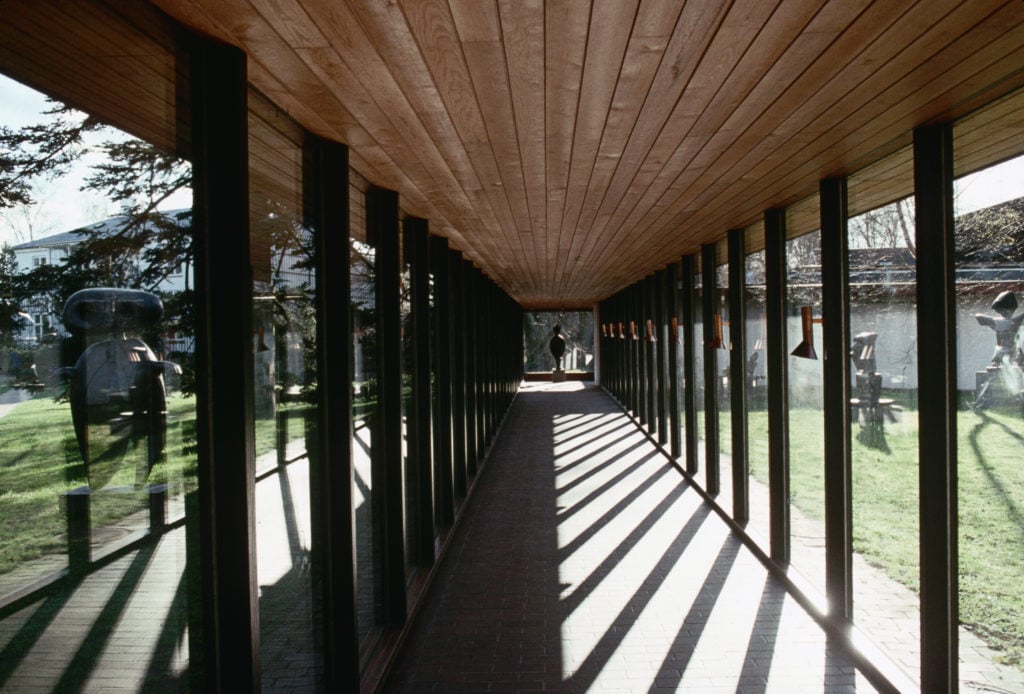
Covered Walkway in Louisiana Museum. Courtesy of Robert van der Hilst/CORBIS/Corbis via Getty Images.
The Louisiana Museum is not, as one might expect, found in the Bayou state of the American Southeast. Rather, it is located 25 miles north of Copenhagen. The name was coined by the man who built the structure that eventually became the museum; he had had three wives, each named Louise (yes, really). Here, you’ll find a world-class collection of Modern and contemporary art, with two floors of work by Giacometti and a Yayoi Kusama infinity room to boot. Well-traveled art lovers often cite the Louisiana as their favorite museum in the world—and with the floor-to-ceiling windows overlooking the Øresund Sound and a solid program of contemporary exhibitions, it’s not hard to see why.
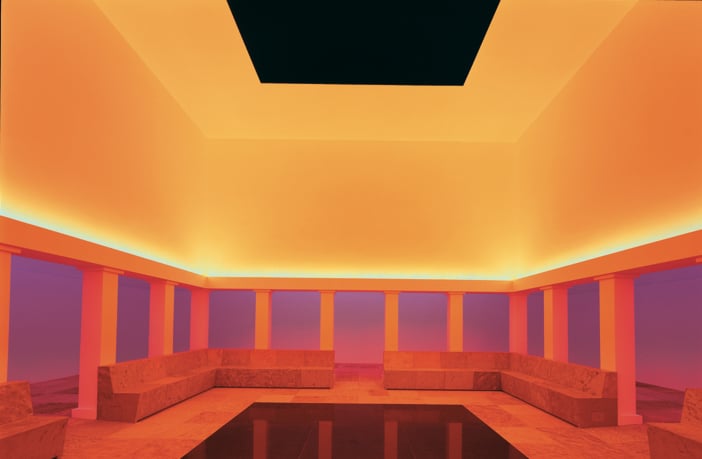
James Turrell, Unseen Blue (2002). Florian Holzherr / Copyright James Turrell / Courtesy of Grupo Colomé.
If James Turrell’s decades-in-the-works, far-flung Roden Crater tells us one thing, it’s that the Light and Space artist doesn’t particularly care about accessibility—but he is a perfectionist. The only museum devoted solely to Turrell is located deep in the Argentinean interior on the Hess vineyard, owned by Swiss entrepreneur Donald Hess. Designed by the artist himself, the museum features nine of Turrell’s signature immersive light installations and includes the largest of his skyspaces, Unseen Blue (2002), the centerpiece of the collection. Until Roden Crater opens to the public (and who knows when that will happen?), it’s the best way to immerse yourself in the artist’s entrancing work.
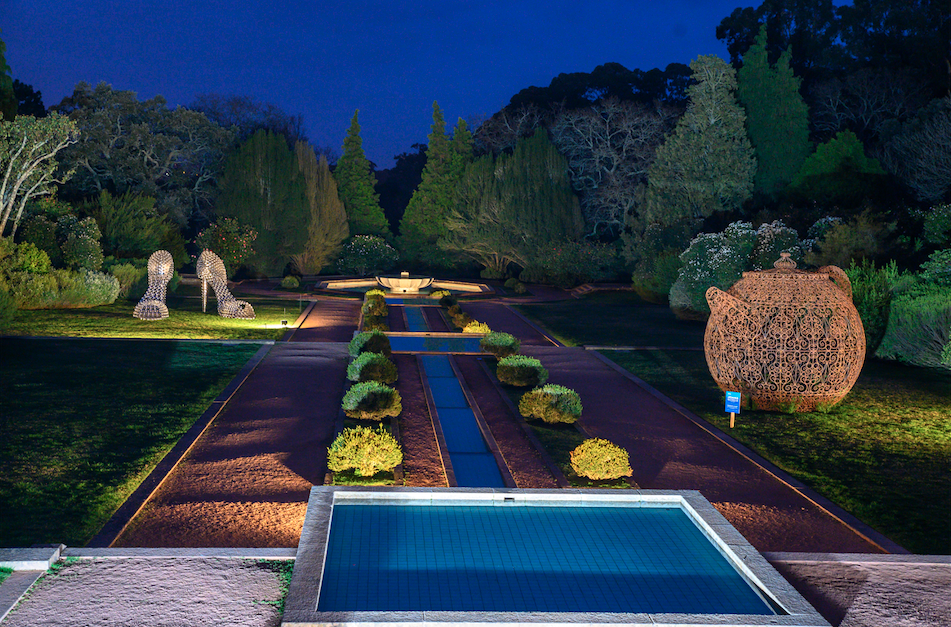
Fundação de Serralves. Courtesy of Getty Images.
The Fundação de Serralves is well equipped to delight and refresh any weary traveler. Encompassing a contemporary art museum, an Art Deco villa, and an idyllic garden, the institution is home to more than 4,000 works of contemporary art, with a strong representation of Portuguese artists, and is also known for orchestrating many a world-class temporary exhibition (a show by Joan Jonas is on view now). Just remember to wear your walking shoes: the expansive and biodiverse garden is interspersed with sculptures by artists such as Dan Graham, Angelo de Sousa, and Angela Bulloch. You’ll want to see it all.